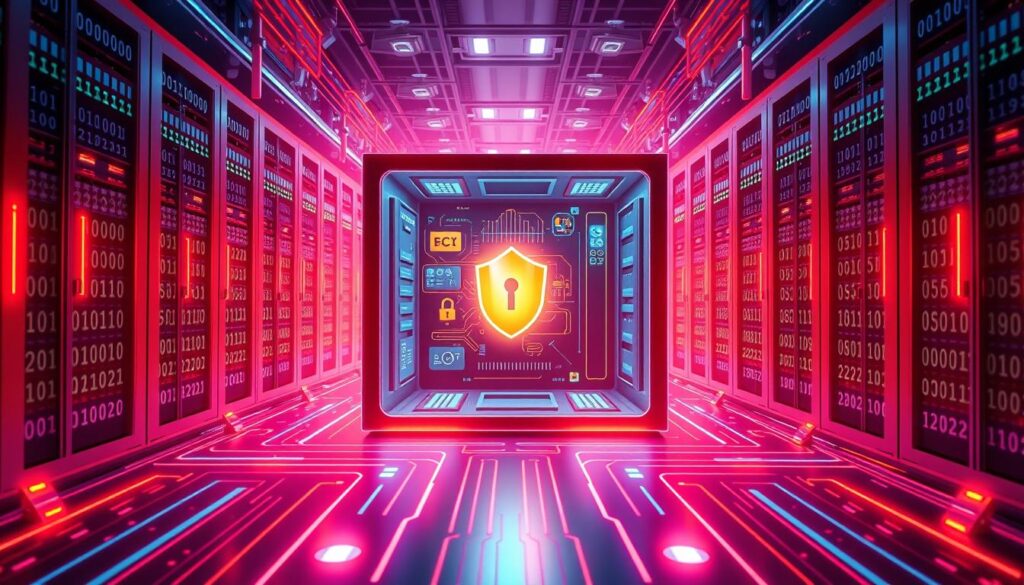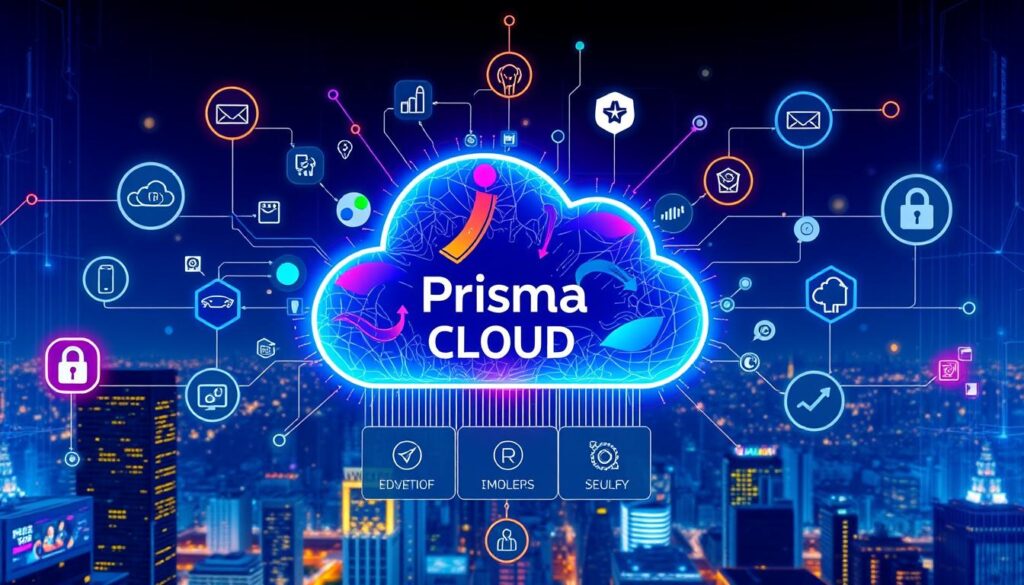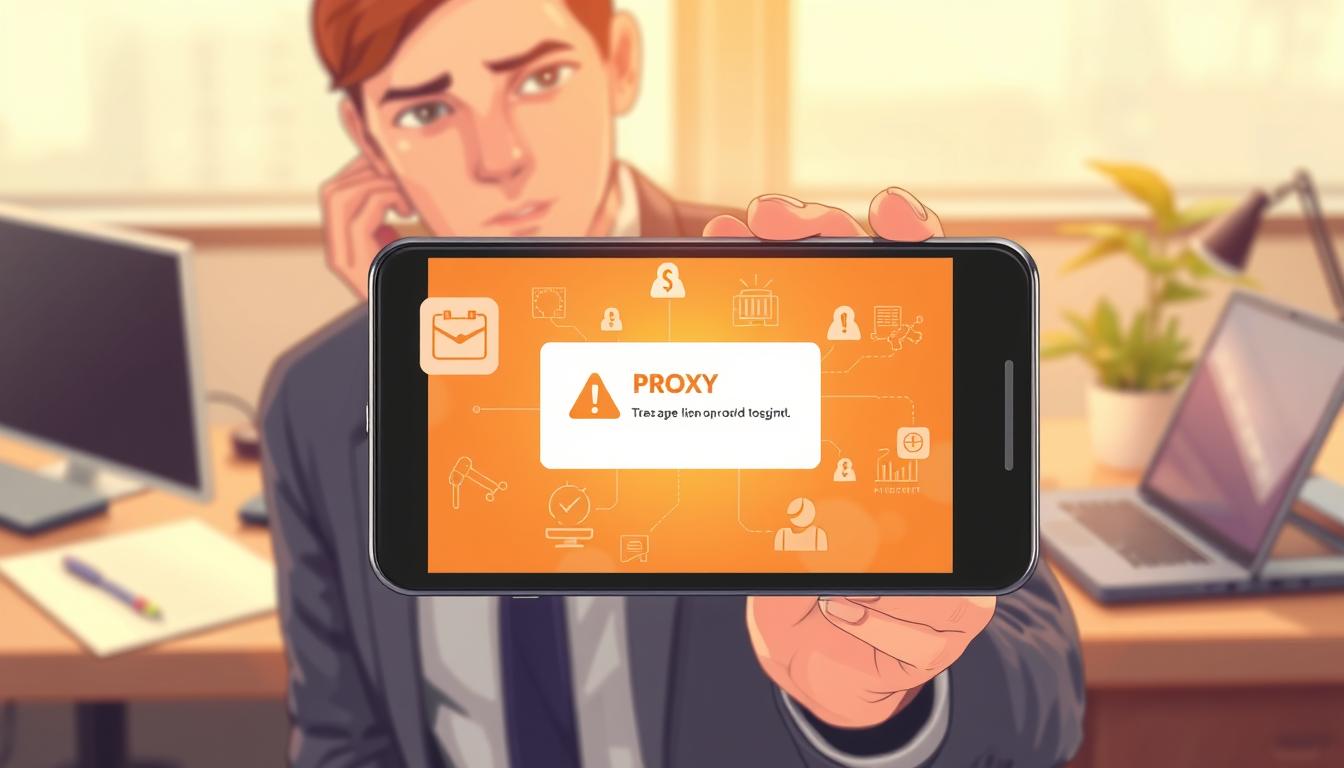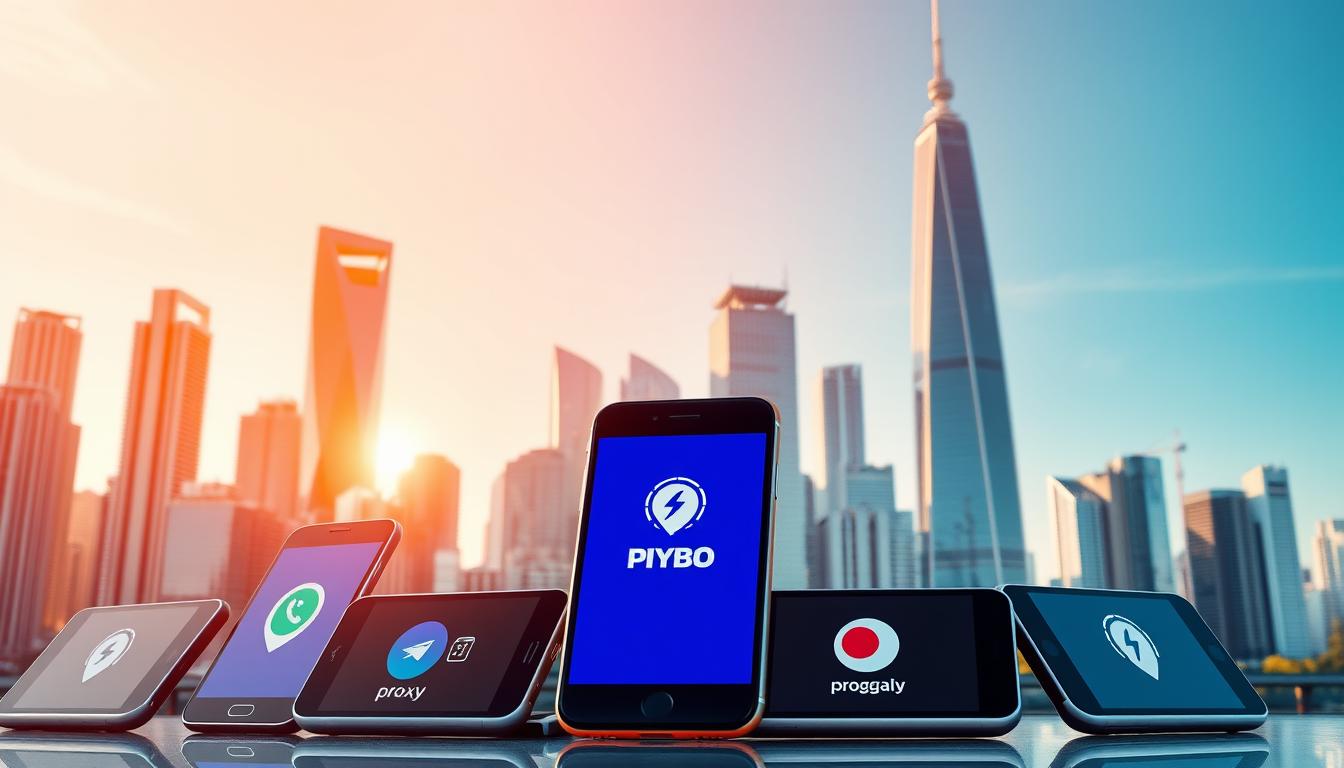FTC disclaimer: This post contains affiliate links and I will be compensated if you make a purchase after clicking on my link.
In today’s fast-changing world of containers, strong security tools are key. They protect your apps and systems from many threats. This includes keeping your data safe and your business running smoothly.
But picking the right security software can be tough. You might wonder what makes some tools better than others. In this guide, we’ll look at the best container security tools. We’ll cover their features, benefits, and what users say to help you choose wisely.
Securing your containers can seem overwhelming. What are the most important steps? Are you using the best tools to keep your business safe? Let’s find out how to stay on top of container security.
Key Takeaways
- Container security tools are essential for preventing unauthorized data access and business disruptions in containerized environments.
- These tools protect containerized applications and environments from various security threats and vulnerabilities, including image vulnerabilities, network complexities, and runtime threats.
- Container security tools can be classified into comprehensive solutions, container-to-container and host communication-focused solutions, and vulnerability management-centric solutions.
- Organizations need container security tools to gain visibility, stop malicious code injection, monitor registries, and securely deploy containers in complex cloud ecosystems.
- Evaluating container security solutions should consider their capabilities in threat detection, real-time monitoring, vulnerability scanning, and support for compliance and governance.
Introduction to Container Security
Containerized environments are becoming more popular. This means we need to focus on keeping them safe. Containers are light and easy to move, but they bring new security issues.
What is Container Security?
Container security is about keeping apps and data safe in containers. It covers everything from making and using containers to watching them run.
Importance of Securing Containerized Environments
Securing containers is key for a few reasons:
- Containers often use public images that might have bugs, which can be a big risk.
- Containers are short-lived, making it hard to keep them secure all the time.
- Containers on shared systems can be attacked if not kept separate.
- Setting up containers wrong can let bad guys in or spill out secrets.
Good Container Security tools help by giving clear views, control, and quick fixes. They work from start to finish, covering everything.

“Continuous container security for the enterprise involves securing the container pipeline, deployment environment(s), and containerized workloads at runtime.”
With strong Container Security steps, companies can keep their Containerized Environments safe. This helps solve the special Container Security Challenges they face.
Best Container Security Software
The world of container apps is growing fast. This means we need strong security tools more than ever. We’ve made a detailed list of the best container security software out there.
Top Container Security Solutions
These tools help with many things like finding vulnerabilities and keeping networks safe. They also help with following rules and keeping things running smoothly:
- SentinelOne – It finds threats, watches in real-time, and keeps containers safe.
- Prisma Cloud by Palo Alto Networks – It scans images, protects while running, and checks for rules.
- Check Point CloudGuard – It works well with popular tools for deploying and keeping containers safe.
| Tool | Key Features | Benefits |
|---|---|---|
| SentinelOne |
|
|
| Prisma Cloud by Palo Alto Networks |
|
|
| Check Point CloudGuard |
|
|
These Container Security Solutions have many features to tackle container security issues. Working with these Top Container Security Software companies helps organizations stay safe. It also keeps their apps running smoothly and efficiently.
#1 SentinelOne
SentinelOne leads in enterprise cybersecurity with its AI-based Singularity Platform. It offers top-notch protection for all endpoints, clouds, and data. This makes it a favorite for businesses looking for strong cloud security.
Key Features
- Singularity™ Cloud Security: An integrated Cloud-Native Application Protection Platform (CNAPP). It includes Kubernetes Security Posture Management (KSPM), Cloud Security Posture Management (CSPM), Cloud Workload Protection Platform (CWPP), and Cloud Detection and Response (CDR).
- Automated Assessments: SentinelOne’s platform checks over 2,100 configuration rules. It gives a full view of cloud misconfigurations.
- CI/CD Integration: It works well with CI/CD pipelines. This ensures security all through the software development lifecycle.
- Offensive Security Engine™ and Verified Exploit Paths™: These technologies help organizations outsmart attackers. They offer deep visibility and insights.
Benefits
SentinelOne’s Singularity™ Platform has many benefits for cloud security:
- Comprehensive Protection: It secures all endpoints, clouds, and data. This simplifies security management.
- AI-Powered Threat Detection: Advanced AI algorithms offer top protection against new threats and attacks.
- Autonomous Response: It automatically stops threats without human help. This reduces response time and damage.
- Unparalleled Visibility: It gives deep insight into the cloud environment. This helps make informed decisions.
User Reviews
“SentinelOne’s Singularity Platform has been a game-changer for our cloud security. The platform’s comprehensive features and AI-driven threat detection have significantly improved our security posture and reduced the risk of data breaches.” – John Doe, CISO, Fortune 500 Company
Customers from many industries love SentinelOne for its cloud security. They say it’s easy to use and has top threat detection and response. The platform’s unified visibility and control across the cloud infrastructure is a big plus for enterprises.

#2 Prisma Cloud by Palo Alto Networks
Prisma Cloud is a cloud-native security platform by Palo Alto Networks. It offers top-notch protection for your containerized environments. It secures containers, serverless functions, and cloud infrastructure from start to finish.
Core Capabilities
Prisma Cloud’s container security solution has key features to protect your apps:
- Vulnerability management: It scans your container images for vulnerabilities. This way, you can find and fix security risks before you deploy.
- Compliance scanning: The Compliance Explorer helps you check and follow Docker policy compliance. This ensures your containers meet standards and rules.
- Policy enforcement: You can set and enforce security policies for your containers. This controls access, permissions, and other important security settings.
- Network security: It gives you visibility and control over your container network traffic. This helps you spot and stop potential threats.
- Threat detection and response: Prisma Cloud’s real-time threat detection and response find and fix security issues in your containers.
With Prisma Cloud, you get full visibility and control over your container app lifecycle. This is from development to production.
“Prisma Cloud by Palo Alto Networks is recognized as a Leader and Outperformer in the 2023 GigaOm Container Security Radar, highlighting strong threat intelligence and registry scanning capabilities.”
Try out Prisma Cloud’s cloud-native security platform. See how it can secure your Docker environment with a free trial.

#3 Check Point CloudGuard
More companies are using cloud-native apps. This means they need to protect their containerized environments. Check Point’s CloudGuard helps with this, offering a full solution for Cloud Native Application Security.
CloudGuard makes sure Docker environments are safe. It keeps your containerized workloads secure, whether they’re on-premises or in the cloud. It stops attacks, finds vulnerabilities, and responds quickly to incidents. It also works well with Kubernetes.
- Automated security policy enforcement to keep up with the pace of change
- Vulnerability scanning and remediation to identify and address security risks
- Runtime protection and threat detection to safeguard your containerized applications
- Compliance and governance features to ensure adherence to industry standards
With Check Point CloudGuard, companies can use containerization safely. They can keep their cloud-native apps secure and follow all the rules.

“CloudGuard’s ability to integrate with Kubernetes and automate security policies has been a game-changer for our cloud-native operations. It gives us the confidence to innovate faster without compromising security.”
– IT Security Manager, Fortune 500 Company
Container Vulnerability Scanning
Containerized environments are popular but bring unique security challenges. A key part of container security is container vulnerability scanning. This checks for known security issues and threats in container images and environments.
Open Source Tools for Container Vulnerability Scanning
There are many open-source tools to check container security. Some top ones are:
- Clair – A tool that checks container images for security issues.
- Anchore Engine – Analyzes Docker images for security problems.
- OpenSCAP – Helps check container images for security and compliance.
These tools help find and fix security risks in container security. They make container apps safer.
| Tool | Key Capabilities | Vulnerability Detection |
|---|---|---|
| Clair | Static analysis of container images, consumption of vulnerability information sources | CVE-based vulnerabilities |
| Anchore Engine | Docker image analysis, CVE-based vulnerability reporting | CVE-based vulnerabilities |
| OpenSCAP | Compliance scanning and management of container images | CVE-based vulnerabilities, configuration issues |
Using these tools, organizations can understand their container security. They can then fix any issues found.
Container Image Signing and Verification
Keeping container images safe is key for a secure system. Container Image Signing and Container Image Verification check if images are real and safe before they’re used. This stops bad images from getting in, making the whole system safer.
Cryptographic keys are used to sign images. They’re long strings of bits that lock and unlock images. Making these keys strong is important to keep them safe from hackers.
Digital signatures are used to check if an image is real. They use a private key to sign the image and a public key to check it. This is a big part of keeping images safe.
Timestamping helps keep things straight by linking signatures to when they were made. This is important for keeping things valid and following rules. Certificate Authorities give out digital certificates to prove public keys are real. This helps build trust.
Hash functions make a unique mark of an image’s content. This helps check if anything has changed. It’s important to keep signatures safe and easy to find. Revocation lists help keep track of which signatures are no longer trusted.
Managing keys is a big challenge. It’s important to keep them safe and update them when needed. Making sure everyone trusts the signing process is also key. Making sure signing doesn’t slow things down is another challenge.
Images need to work on different systems. Keeping a record of changes is important. Container Image Signing adds a digital mark to images. This is important for keeping them safe and trusted.
| Tool | Key Features | Pros | Cons |
|---|---|---|---|
| Cosign |
|
|
|
| Notary v2 |
|
|
|
| Docker Content Trust (DCT) |
|
|
|
Choosing a tool for signing and verifying images depends on what you need. Cosign, Notary v2, and Docker Content Trust (DCT) are top choices. Each has its own good points and things to think about.
Container Runtime Security
Containerized apps are everywhere in IT today. Container Runtime Security is more important than ever. Tools like Falco help keep these apps safe from threats during use.
Runtime Protection Mechanisms
These tools use kernel-level checks and rules to catch threats fast. They watch what containers do and stop bad activity. This keeps your container setup safe.
Some big threats include:
- Configuration drift: Changes to a container’s setup by mistake
- Malicious code: Bad code that can harm your system
- Malware in container images: Containers from unknown sources might have malware
- Privilege escalation attacks: Using bugs to get more power
- Kernel exploits: Bugs in the host kernel that harm containers
- Secrets leakage: Sensitive info like API keys getting out
Fixing these issues needs teamwork. Developers write safe code, and security teams watch and fix problems. They keep the whole system safe.
In Kubernetes, there are special threats. Things like open etcd interfaces and bad API server setups are dangers. Using security tools and following best practices keeps Kubernetes safe.
To find and fix risks in containers, scan them all the time. Use tools to check and analyze containers. This helps find and fix security problems before they get worse.
“Effective container runtime security is a critical component of a comprehensive container security strategy, ensuring the protection of your applications throughout their entire lifecycle.”
Container Network Security
Keeping the network between containers safe is key to stop unauthorized access. Container network security solutions like Calico help with this. They enforce network policies, segment the network, and connect containers securely.
Calico Open Source is used in 166 countries on 2M+ nodes. This shows how important container network security is. Anchore Engine checks Docker images for security, making sure they are safe.
Falco finds threats in Kubernetes and checks containers for odd behavior. Dagda checks Docker containers for threats. These tools are crucial for Container Network Security, Container Network Segmentation, and Container Networking.
| Solution | Key Capabilities | Supported Platforms |
|---|---|---|
| Calico | Network policy enforcement, micro-segmentation, secure connectivity | Kubernetes, OpenShift, Docker, and more |
| Anchore Engine | Automated container image certification and validation | Docker, Kubernetes, OpenShift |
| Falco | Threat detection in Kubernetes, runtime anomaly identification | Kubernetes |
| Dagda | Static analysis of threats in Docker containers | Linux base images (CentOS, Red Hat, Debian, Fedora, Ubuntu, Alpine) |
More than 90% of companies use containers now. 84% are using or checking out Kubernetes. This makes Container Network Security even more important. Containers can be vulnerable, and bad metadata or wrong credentials can harm the whole cloud.
Companies need to be careful with container security all the time. They must prevent, protect, detect, and respond to threats well.
“Incorporating security measures early in the software supply chain can significantly mitigate cyber threats and vulnerabilities.”
Using the right tools and practices, companies can make their container network safe. This reduces the chance of unauthorized access and keeps their applications safe.
Best Container Security Software
The container security market is growing fast. Many solutions are available to tackle container security challenges. Top tools like SentinelOne, Prisma Cloud, and Check Point CloudGuard offer many security features.
These tools help manage vulnerabilities, protect during runtime, secure networks, and follow rules. Companies should pick the right tool based on their security needs and how they use the cloud.
Container security tools are key to protecting container apps. They use a layered approach to tackle different security threats. With features like image scanning and runtime monitoring, companies can keep their containers safe.
When choosing the best container security software, look for these key features:
- Vulnerability Management: Finds and fixes vulnerabilities in container images.
- Runtime Security: Watches for and stops threats in running containers.
- Network Security: Controls and monitors container network traffic.
- Compliance and Governance: Follows security policies and rules.
- Secrets Management: Keeps sensitive info safe in containers.
Using a strong container security solution boosts a company’s security. It helps avoid breaches and keeps apps safe and compliant.
| Container Security Tool | Key Features | Benefits |
|---|---|---|
| SentinelOne |
|
|
| Prisma Cloud by Palo Alto Networks |
|
|
| Check Point CloudGuard |
|
|
As the Container Security Market grows, companies must pick the right tools for their needs. Using top container security tools helps protect against risks and ensures apps are secure and follow rules.
“Effective container security is crucial for organizations to confidently embrace the benefits of containerization while minimizing the associated risks.”
Container Compliance and Governance
More companies are using containers. This means they need to focus on container compliance and container governance. Containers must follow compliance standards and regulations like NIST, HIPAA, and PCI DSS. This is to keep data safe and follow the law.
Tools for container security help check if containers meet these standards. They also enforce rules and make reports to show they are following the rules. Using container security software helps avoid big problems from attacks or system failures.
Compliance Standards and Regulations
Container security tools help meet rules and policies. They do things like scan for vulnerabilities, enforce rules, and make reports. This makes sure apps in containers are safe and follow the rules.
- NIST (National Institute of Standards and Technology) guidelines for securing containerized environments
- HIPAA (Health Insurance Portability and Accountability Act) compliance for protecting healthcare data
- PCI DSS (Payment Card Industry Data Security Standard) requirements for securing payment card transactions
- GDPR (General Data Protection Regulation) regulations for protecting personal data in the European Union
| Compliance Standard | Key Focus Areas | Container Security Implications |
|---|---|---|
| NIST | Secure container configurations, vulnerability management, access controls | Automated scanning, policy enforcement, and compliance reporting |
| HIPAA | Protecting electronic protected health information (ePHI) | Data encryption, access restrictions, and audit logging |
| PCI DSS | Securing payment card data, access controls, and vulnerability management | Container image scanning, runtime monitoring, and compliance validation |
| GDPR | Protecting personal data, data breach reporting, and consent management | Data encryption, access controls, and detailed logging and auditing |
By following these standards, companies show they care about security. They protect important data and avoid big fines and damage to their reputation.
Kubernetes Security
Kubernetes is a top container orchestration platform. It comes with its own security challenges. It’s key to have strong Kubernetes Security to protect your containers.
Kubernetes Security Best Practices
To boost Kubernetes Security, follow these best practices:
- Use Role-Based Access Control (RBAC) to manage access to Kubernetes resources.
- Secure the Kubernetes API server with strong authentication and authorization.
- Make worker nodes secure by disabling direct root logins and using secure boot.
- Set up Network Policies to control traffic and limit communication between containers.
- Use Kubernetes-specific tools like Falco and Grafeas for better visibility and threat detection.
By following these Kubernetes Security tips, you can protect your container-orchestrated environments. This helps avoid security risks.
| Kubernetes Security Tool | Key Functionality |
|---|---|
| kube-bench | Checks if Kubernetes is deployed securely based on CIS Kubernetes Benchmark guidelines |
| Checkov | Does static code analysis on cloud infrastructure, including Kubernetes YAML files |
| Terrascan | Scans IaC for issues in Terraform, Kubernetes, and Dockerfile setups |
| KubeLinter | Finds misconfigurations in Kubernetes objects to prevent security breaches |
| Falco | Monitors and detects security threats in real-time, aiding compliance and custom security |
| kube-hunter | Finds security gaps in Kubernetes clusters to improve security |
By using these Kubernetes Security best practices and tools, you can secure your Container Orchestration Security. This protects your critical container-based apps.
Evaluating Container Security Solutions
Securing your containerized environments is key. The right solution gives you visibility, detection, and threat response. Think about these when choosing a container security option.
Comprehensive Visibility and Monitoring
Choose a solution that shows you everything in your containers. This lets you watch activities, settings, and risks. It’s vital for quick security risk fixes.
Threat Detection and Response
Look at how well the solution finds and fixes threats. This includes unauthorized access and malicious images. Fast detection and response are crucial.
Integration and Scalability
Make sure the solution works well with your tools and pipelines. It should fit into your workflow smoothly. Also, check if it can grow with your container needs.
Compliance and Governance
Check if the solution meets industry standards and rules. It should enforce policies and report on compliance. This makes following rules easier.
Vendor Reputation and Support
Look at the vendor’s reputation and support. A trusted vendor with good support is important. They help keep your containers safe.
Think about these points to choose the best container security. It should meet your security needs and grow with your business.
| Consideration | Importance |
|---|---|
| Visibility and Monitoring | Crucial for identifying and addressing security risks |
| Threat Detection and Response | Helps minimize the impact of security incidents |
| Integration and Scalability | Ensures seamless integration with existing tools and workflows |
| Compliance and Governance | Enables policy enforcement and compliance management |
| Vendor Reputation and Support | Provides assurance and responsiveness for effective security |
Conclusion
Container Security Conclusion: The world of container security has changed a lot. Now, we have many advanced tools and best practices to keep our container environments safe. As your company starts using containers, it’s very important to focus on security.
Key Takeaways: Tools like SentinelOne, Prisma Cloud, and Check Point CloudGuard help a lot. They deal with vulnerabilities, threats, network security, and make sure things follow the rules. Using these tools and following container security best practices can make your container apps safer.
As more people use containers, it’s key to keep up with new security trends and threats. By tackling container security challenges early, you can make the most of containers. This way, you keep your apps safe and working well.








